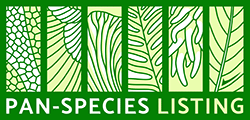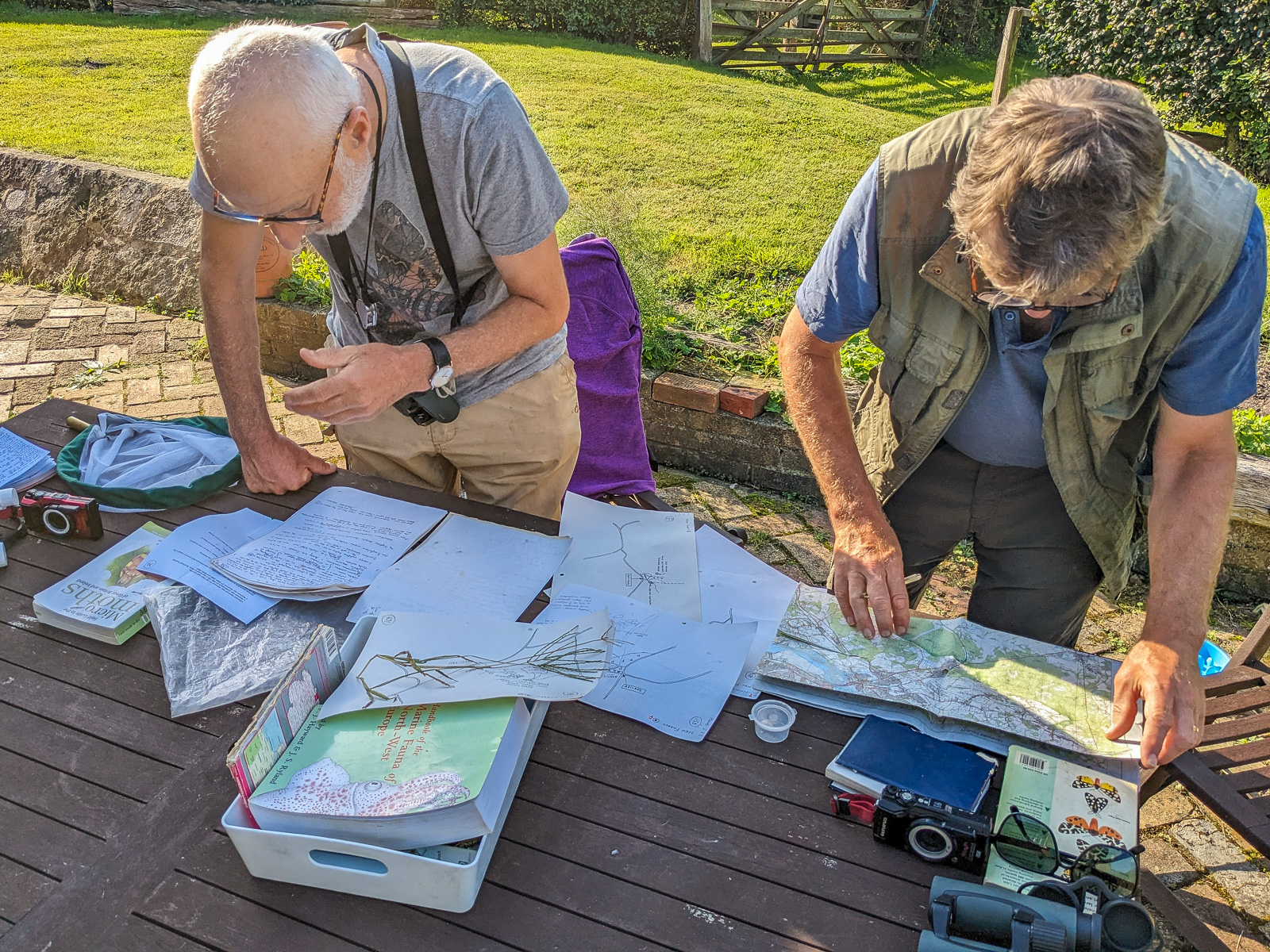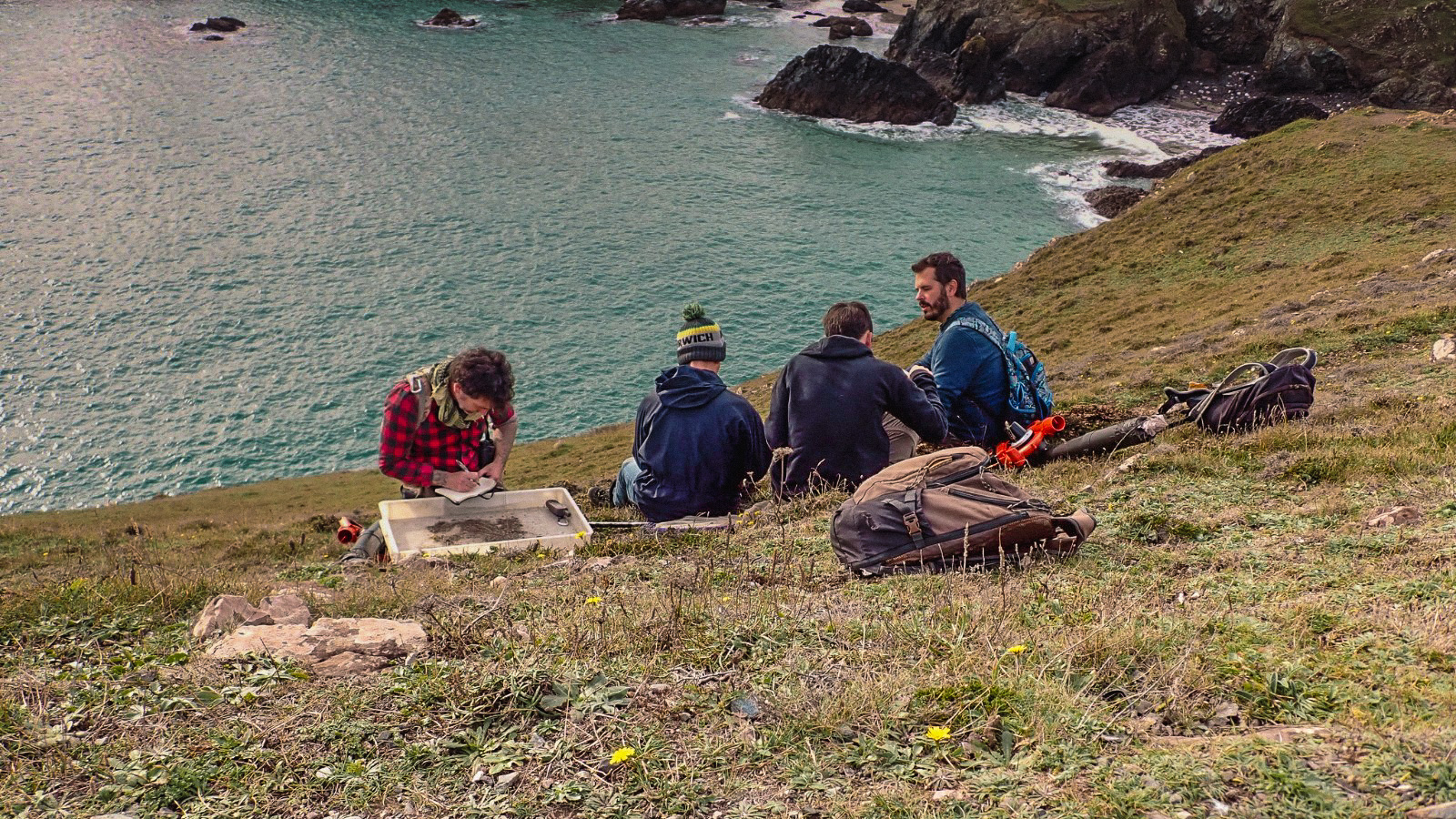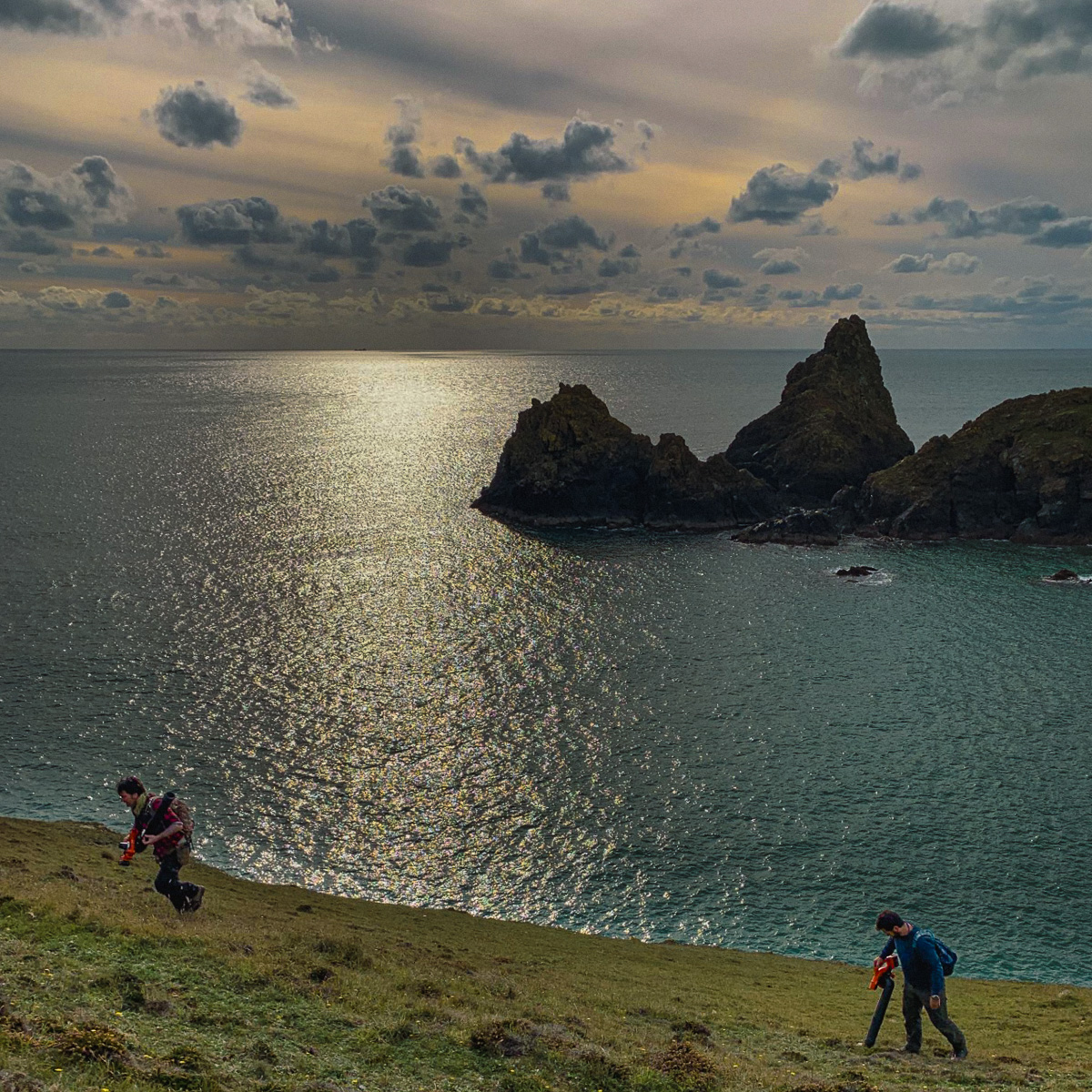What is a pan-species list?
A pan-species list is a list of all the animals, plants, fungi, protists and cyanobacteria—all of the wildlife—you have seen in Britain, Ireland, Isle of Man, and the Channel Islands. Whether a Daisy or a Death's-head Hawk-moth, a Killer Whale or a Killer Shrimp, all species count as equal on your pan-species list. Although this may seem like the trivialisation of lifetime’s worth of natural history to the accumulation of a big list, it's what is behind the list—how you get there—that makes this approach to natural history so powerful. Add a healthy dose of competitiveness in the form of the rankings pages and thanks to Mark Telfer (who started it all and came up with the name), pan-species listing was born. Will this bring about a 'renaissance of the all-round naturalist'?
You can also get involved by compiling a pan-species list for a site: it could be your garden, your patch, or a reserve that you work on or regularly visit.
What are the benefits of pan-species listing?
There are many benefits to the pan-species listing approach to natural history. Here are just a few:
- It makes you look at the commoner wildlife under your feet and on your doorstep, often the stuff that really drives the ecosystem while going unnoticed by many.
- It encourages you to tackle difficult and challenging groups.
- It produces lots of records of these less accessible taxa.
- Whether professional or amateur, it will enhance your natural history skills and can even help you to make a difference to UK wildlife and recording in a relatively short amount of time.
- It promotes the concept that all wildlife is equal.
- There's now a growing community of all-round naturalists, so do please join the Facebook group.
- Field events are usually held annually around the UK.
- Unlike birding, you can get lifers every day, for life! It’s a lifelong hobby that is with you always. The UK5000 Club awaits!
- It's rewarding, it’s fun… and it’s mildly addictive.
- For neurodivergent people, it’s particularly good at providing a daily dopamine fix! Of course, everyone benefits from this too.
- For some, it can literally change your life.
How do I go about compiling my list?

- If you are starting from scratch, the easiest way to compile your list is to use panspecieslisting.com, either add your species one at a time or via the batch data entry option.
- If you can't manage to enter your list yourself, all your records are already databased or in Excel, get in touch via
This email address is being protected from spambots. You need JavaScript enabled to view it. , as we may be able to help you with a ‘one off’ import to get you started. - Please remember, pan-species listing is not an alternative to biological recording, it’s an output of your biological recording efforts. We strongly support iRecord for submitting your biological records.
Pan-species listing guiding principles

As a community we've opted for a relaxed approach to the ‘rules’, with every pan-species lister approaching their list in a slightly different way. The mantra “your list, your rules” has emerged over the years to remind us that, although we are all doing roughly the same things, there are subtly different ways that we do them and all of them are valid (within reason!). Hence, the term ‘principles’ makes more sense than ‘rules’. Some people count things that others wouldn't. But nobody minds—we realise we’re not competing against each other, and that pan-species listing is a personal challenge to get a grip on the immense biodiversity of these islands.
Listed below are what you can and can't count on a pan-species list. Many pan-species listers take different approaches, so these are best thought of as guiding principles rather than rules. In brief:
Each species counts as one and should be seen (or trapped) in the wild, by the recorder.
Geography
The biogeographical unit of ‘the British Isles’, i.e. Britain, Ireland and the Isle of Man, including the seas around the isles (defined for the UK as the UK Economic Exclusion Zone of 200 nautical miles (370 kms) or midpoint between the UK and any neighbouring country). The Channel Islands also count, even if they are biogeographically part of France. This is one of the non-negotiable guiding principles. That is, you can decide to record in a smaller geographical area if you wish (such as your home county) but you won’t appear in the main PSL rankings, which will always refer to lists of the full British Isles. Equally, you may never choose to go to Ireland, but if you want to appear in the main rankings, please select the correct location when creating your pan-species list. Obviously, for the same reason, you can’t add any additional countries to your recording area, but who knows, world pan-species listing might take off one day! You can of course, have multiple PSL lists for different regions.
Taxonomy
All species in the animal, plant, fungus, and protist Kingdoms, i.e. everything except Bacteria and viruses. Bacteria are excluded partly because they have not been traditionally covered by naturalists and partly because the very concept of a species is difficult to apply to Bacteria. However, we have recently decided to include Cyanobacteria.
Taxonomic level
Only species count as ticks. No sub-species or variants. And aggregates don’t count either, if you want a dandelion or a common rustic species on your list, you need to identify it to species.
Sensory
Ideally, you should see each species but in some rare cases you may wish to count species that are heard only, especially if the sounds are diagnostic, the species is difficult or impossible to see and/or doing so would cause harm to it. It doesn’t count if you see it only via television or digital camera. Some pan-species listers count gall-causers and leaf-miners only when they've seen a living occupant, but some are happy just to see the diagnostic characters of the gall or leaf-mine without laying eyes on the species itself. No one should feel pressured to break open a gall and kill the insect inside just for a tick but if you feel you have to, so be it. Just remember, it could just as likely be a parasitoid anyway.
Alive or dead
Ideally, it should be seen alive but there are exceptions. Many entomologists count species that they have only seen dead, such as those they have caught in lethal trap samples (e.g. pitfall traps, Malaise traps). Of course, trapping should only be carried out where the results are likely to justify the casualties, e.g. on a site that is scheduled for development, part of research and monitoring or when targeting the recording of species that are impossible to find by any other means. Counting other people’s herbarium specimens for example, absolutely does not count.
Free or captive
Although many moth-ers will count moths in pots kept in fridges, most pan-listers look down on this as a way to boost your moth list. We encourage you to find your own rare moths. However, pan-species listers can tick things that are being temporarily held captive if they wish. It’s worth pointing out though that no one is going to ‘fridge tick’ their way to becoming top moth lister! Species in long-term captivity (e.g. zoo or farm animals) or culture (e.g. crops, garden plants) don’t count.
Developmental stage
All developmental stages count. For example, eggs, larvae, nymphs, and pupae count just the same as adult insects, if they can be confidently identified; however, few pan-species listers would count a bird from its egg. Likewise, plants that are not in flower can be counted (even though not everyone chooses to do so). Even seeds can be counted as long as they are alive, which raises the possibility of adding sea beans, nickar nuts and other marine drift seeds if you can find them and get them to germinate.
Aliens

This is the area, more than any other, where attempts to make a simple set of rules that can be applied consistently across all taxonomic groups, are doomed to failure! There is a spectrum from native species that have lived in Britain from before the time that Humans started to make their mark on the planet, up to alien species that have just been intercepted on arrival at one of our ports. Although we value the true natives above all others, we find the whole spectrum fascinating. So, the ‘line in the sand’ is drawn to include the majority of aliens as long as they have established, or seem capable of establishing, without deliberate human assistance. You can count any garden plant that has dispersed and established beyond the garden fence. You can count any invertebrate that has established, even if only in highly man-modified environments (e.g. in warehouses or heated greenhouses). But you can’t count any of the invertebrates that you can occasionally find in your groceries as primary imports, but which are unlikely to be able to survive here unaided.
Hybrids
Ordinarily, interspecific hybrids are evolutionary dead-ends with little or no fertility: not countable. But amongst plants at least, there are numerous species which have a hybrid origin, usually formed by polyploid hybrid speciation. Pan-species listers won’t want to count a hybrid unless it can reproduce and persist in the absence of one or both parent species. The wording “one or both” is deliberately chosen: Edible Frogs and various Sorbus species are countable but have a hybrid origin and need reproductive contact with one of the parent species to be able to reproduce themselves. In practice when adding hybrids for you to tick on the website, we have decided that stable hybrids, those separately numbered in Clive Stace’s “New Flora of the British Isles”, are a good starting point for what hybrids are tickable. For example, the familiar garden escape Montbretia is listed as a 4. Crocosmia x crocosmiiflora Montbretia and is available to tick on the website, while the hybrid listed as 2 x 4. C. masoniorum x C. x crocosmiiflora is not, as it has neither its own number, is listed only by its parents’ names and as such, is not considered to be a stable hybrid.
We recognise that Stace did not necessarily cover all the hybrids in the same way and that some hybrids not numbered might be better considered for inclusion here as stable hybrids. We suggest that if anyone has a candidate hybrid not already listed on the website that might fall into this category, that they approach us, and we will consider it for inclusion.
Pending species not yet on the website
If you are lucky enough to find a first for Britain or even better, something new to science, well done! Once confirmed, let us know and we will add it to the website so that it can be ticked. Most people are now tallying up their ‘pending species’ or listing them all in the comments section on their list, until they are available to tick. In some cases, this will even involve species that are as yet un-named. Any such species will be relayed to the UK Species Inventory (UKSI) as this is the cornerstone for taxonomy and nomenclature for biological recording in the UK.
Contribution
Perhaps the most important principle of all is this; how involved were you with the encounter? Did you find it, did you record it, did you set the trap, did you do the research? Did you somehow contribute to our collective knowledge of that particular species in the UK? Now, there is no way we would expect you to do this all of the time (unless you are a purist, self-found and self-identified lister) but if most, or all of your list, is made up of encounters that you have not contributed to in some way, you’ve got the wrong idea about pan-species listing. It’s not about ticking off as many things for the sake of it to rise up the rankings. It’s about becoming a better naturalist, putting something back into the natural history of the British Isles and earning your place among your fellow pan-species listers.
Twitching is not frowned upon in PSL, it’s encouraged even but it should be part of a balanced diet of natural history. So, make sure you get plenty of ‘self-found fibre’ in there too.

Be your own judge
Most pan-species listers have their own rigid standards about what they can and can’t count but at its heart, pan-species listing is about recording as much wildlife as you can in the British Isles over a lifetime—so we shouldn’t make this too hard for ourselves. If you want to take the purist approach on all of the above principles, you’re going to make life very difficult for yourself—nor would it be that much fun. If you go the other way, you can amass a huge list in a short time, learn absolutely nothing and contribute even less, while pumping vast amounts of CO2 into the atmosphere in the process. In reality, we all sit somewhere in this spectrum and none of this is policeable anyway. You have to be your own judge. We only need a set of rules if we’re competing against each other to get the biggest list. But pan-species listing is more about the personal challenge to get a grip on the immense biodiversity of these islands.
